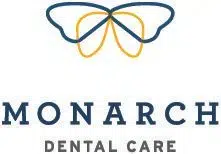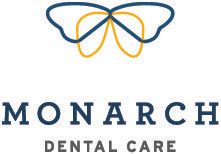
Essential Dental Bridge Maintenance Tips
Dental bridges are an effective solution for replacing missing teeth, restoring your smile, and improving your oral health. However, like any dental restoration, they require proper care and maintenance to ensure their longevity and functionality.
Our Prairie Village dentist wants to ensure that your dental bridge lasts as long as possible. We’ve created a guide that helps you better understand how to care for your dental bridge.
Caring for Your Dental Bridge
- Good Oral Hygiene: Brush your teeth at least twice a day using fluoride toothpaste. Make sure to clean the areas under and around your bridge. Use floss or interdental brushes to clean spaces between your teeth. A floss threader or super floss can help clean under the bridge.
- Regular Dental Check-ups: Visit our dentist in Prairie Village regularly for check-ups and professional cleanings. This will allow early detection of any problems and keep your bridge and surrounding teeth healthy.
- Watch What You Eat: Sticky or hard foods can harm your bridge. Limit consumption of foods like hard candy, caramel, and nuts.
- Use Mouthwash: An antiseptic mouthwash can help reduce bacteria in the mouth, helping prevent gum disease and decay.
- Protect Your Teeth: If you grind or clench your teeth, ask our dentist about a night guard to protect both your natural teeth and the bridge.
- Avoid Smoking and Excessive Alcohol: Both can lead to gum disease, which can weaken the foundation (the teeth or implants) that supports your bridge.
- Maintain a Healthy Diet: A balanced diet helps provide the necessary nutrients for optimum gum health and supports the teeth holding the bridge.
- Check for Looseness: If your bridge becomes loose or you feel any discomfort, see our dentist immediately. Don’t try to adjust or fix it yourself.
- Fluoride Treatment: Depending on your risk for cavities, our dentist may recommend a fluoride gel or mouth rinse.
- Antibacterial Gel: In some cases, our dentist might recommend the use of an antibacterial gel under the bridge to reduce bacteria and food accumulation.
Signs of Wear and Tear
- Loose or shifting bridge: If your dental bridge feels loose or shifts when you bite or chew, it may indicate that the cement holding it in place has worn off or that there’s an issue with the underlying teeth or implants.
- Discomfort or pain: Sensitivity, pain, or discomfort while eating or biting down can be a sign of a problem with your dental bridge. It could be due to an ill-fitting bridge, decay underneath the bridge, or gum inflammation.
- Visible damage: Inspect your dental bridge for any visible signs of damage, such as cracks, chips, or fractures. Damaged areas can harbor bacteria and lead to further complications if left untreated.
- Gum inflammation: If you notice redness, swelling, or bleeding around the gum area adjacent to the dental bridge, it may indicate gum disease or an infection. Prompt attention is necessary to prevent further damage to your bridge and oral health.
Replacing Dental Bridges
Consultation
Preparation
Impressions
Temporary Bridge
Final placement
Frequently Asked Questions
Maintain Your Beautiful Smile for Years to Come
Proper maintenance and timely replacement of dental bridges are essential for maintaining oral health and preserving the longevity of your restoration. By staying vigilant and addressing any signs of wear and tear promptly, you can avoid further complications and ensure the success of your dental bridge. Remember to maintain good oral hygiene practices, visit our dental office regularly, and follow their recommendations for optimal bridge care.
Contact our Prairie Village dentists today at (913) 362-4488 to learn more about how to properly take care of your dental bridges.

